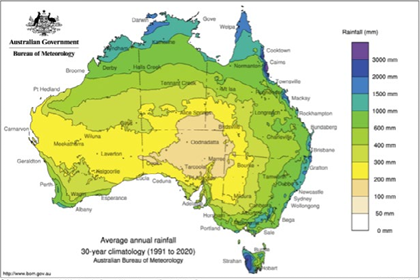Moisture monitoring – A PotatoLink demonstration
Beyond providing soil moisture data at a given time and soil depth, can soil moisture probes help in making future irrigation decisions? The potential of moisture probes to serve a dual role was the subject of a PotatoLink demonstration trial are discussed in this PotatoLink magazine article.
Mini guide – selected warm weather pests and diseases
During the Australian summer, potatoes are susceptible to various pests and diseases that can thrive in the warm and humid conditions. Get the mini guide in this PotatoLink Magazine article.
Controlling soilborne diseases and pest with biofumigants
The soil ecosystem directly impacts crop yield and quality. In recent years, there has been growing interest in sustainable farming practices that improve soil's biological, chemical and physical characteristics. Biofumigation is one of these sustainable practices discussed in this PotatoLink magazine article.
Management of recently established leafminers
Three new species of Lyriomyza leafminer flies are now present in Australia including, American Serpentine Leafminer (ASLM (Liriomyza trifolii)), Serpentine Leafminer (SLM (Liriomyza huidobrensis)), and Vegetable Leafminer (VLM (Liriomyza sativae)). Read more in this PotatoLink magazine article by Shakira Johnson, AUSVEG.
Effect of heat on potatoes
What happens when climate change impacts one of the world’s most important foods? With a burgeoning global population, food security is one of the most complex problems of our time, and our rapidly warming planet complicates the problem further. Read more in this PotatoLink magazine article.
PotatoLink Bulletin December 2023
Biological product demonstration site results, new portal to support growers through dry times, save the date: WA seed potato growers workshop, and much more.
PotatoLink Bulletin November 2023
New issue of the PotatoLink magazine, webinar: setting up for summer – preparation for potato growers, WPC 2024 speaker: IPM in potato production with Paul Horne, and much more.
PotatoLink demonstration: Using biologicals in a commercial farm setting
A recent PotatoLink demonstration trial at Springbank, Vic, investigated the impact of farm practices on the effectiveness of biologicals, including the application of fungicides, the influence of soil nutrient availability, and fertiliser applications. In Issue 10 of PotatoLink magazine you will find all the details of the trial as well as the results.
A new potato virus vector monitoring program
Australian Seed Potato Industry Certification Authority (AuSPICA) has introduced an innovative solution to monitor insect vectors in potato crops. Passive suction traps installed in the field take samples of potential virus vectors, which are then sent to Intertek laboratories for rapid DNA analysis. The data developed builds information on the presence of potato virus vectors during the growing season and in the long term, builds trends on vector populations in potato growing regions.
Read the full story in Issue 10 of PotatoLink magazine.
PotatoLink Bulletin October 2023
Podcast: Potato genetics at the James Hutton Institute, Hort Innovation webinars, BOM long-range forecast, and much more.
PotatoLink Podcast Episode 5: Potato genetics at the James Hutton Institute
Doctors Ingo Hein, Sanjeev Sharma and Xinwei Chen talk to PotatoLink about their research, and the exciting new world of advanced potato breeding.
PotatoLink Bulletin September 2023
Innovative climate tool expands to support potato farmers, Hort Innovation webinar: deep dive into international consumer demand for vegetables, yield mapping with HarvestEye webinar, and much more.
Jindong WA field walk and workshop
Read the recap of a PotatoLink event held for the potato industry at the Kaloorup Fire Shed in Jindong in the afternoon of the 15 August 2023.
Biofumigants and cover crops for disease and nematode management
Join leading biofumigant and cover crop researchers John Duff (QDAF) and Mieke Daneel (ARC, South Africa) as they discuss what biofumigants are how they work, how they can be used for disease and nematode management and wha to consider when choosing biofumigant species.
Yield mapping with HarvestEye
Join the PotatoLink team as we speak with Vee Gururajan from HarvestEye and Abe Montano from Elders as they explain the new technological developments that may make accurate, GPS based, yield monitoring an easy activity in potato production.
Getting the most out of Bureau of Meteorology data
Following a PotatoLink online training webinar with senior members of the Bureau of Meteorology, Paulette Baumgartl has compiled a comprehensive article in Issue 09 of PotatoLink magazine pointing out that behind the weekly temperature and rainfall forecasts, and the much-loved radar, sits an abundance of data, both raw and interpreted. If you know where to look, this data can be a useful decision-making tool.
Impact of seed spacing on potato yield and size
Potato growers know that seed is an expensive input not to be wasted. And inefficient planting and spacing, including skips and doubles, can be costly.
Optimising seed spacing provides a real opportunity to minimise inputs while maximising yield. To evaluate the economic impact of poor planter performance, PotatoLink conducted a demonstration on the impact of seed spacing on potato yield and size.
Reduced tillage in potatoes
Reduced tillage agriculture has emerged as a sustainable and innovative approach to farming, offering numerous benefits to both farmers and the environment. This PotatoLink magazine article, shares some examples of growers who have incorporated reduced tillage into their farm practice and research seeking to quantify outcomes when tillage practices are altered.
Soil Physics 101
Understanding and managing the interacting components of soil health - physical, biological and chemical factors - is essential to create robust and productive soils that are able to sustain commercial potato production. This PotatoLink magazine article examines some aspects of soil physical properties and how they impact agricultural practice (and how agricultural practices impact soil physical properties).




















